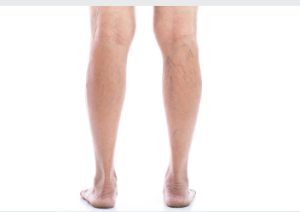Varicose Vein Removal
A varicose vein removal is an option for venous disease patients. The procedure may include compression stocking therapy, microphlebectomy, or ambulatory phlebectomy.
 Compression stocking therapy
Compression stocking therapy
Compression stockings are a type of hosiery that can help to reduce the symptoms of varicose veins. Varicose veins are blood vessels that bulge and cause painful symptoms. These symptoms include pain, heaviness, swelling, and cramping.
A doctor may prescribe compression stockings to treat your symptoms. They are usually knee-high or thigh-high stockings.
In addition to relieving the symptoms of venous disease, they can also help slow down the progression of the disease. However, they are not a cure for vein disease.
Compression stockings are used for several reasons, including relief of bruising after surgery and to help prevent ankle and leg swelling after endovenous laser treatments. In addition, some patients are required to wear stockings for several months after their treatment.
For some, post-operative compression stockings are uncomfortable to wear. Understanding how to put on and take off the stockings properly is crucial. The stockings should be applied during the day or at night. If you are concerned, the Vein Centre can guide you.
You should contact your physician if you are experiencing new areas of irritation after you have worn the stockings. Be sure to wash your stockings regularly and ensure they are dry.
Although there are many varicose vein removal SA treatments for venous disease, compression stockings are the most commonly prescribed. These stockings are typically thigh-high but can be used for various conditions.
Varicose veins are a painful problem that can cause a lot of suffering. If you are considering compression stocking therapy for varicose vein removal SA, you will want to discuss the procedure with your vascular surgeon. This treatment is safe and very effective.
When deciding on a venous specialist, look for one board-certified in vascular & interventional radiology.
Ambulatory phlebectomy
Ambulatory phlebectomy, or hook phlebectomy, is a minimally invasive procedure to remove varicose veins. The method involves a series of small incisions.
The doctor makes the incisions and then injects a local anesthetic. Next, a blunt probe is used to loosen the veins. After the veins are accessible, they are tied off with an absorbable suture. It allows the body to redirect blood flow to healthy veins naturally.
A phlebectomy hook is then inserted through the incision. This hook is like a crochet hook used to undermine surrounding tissue. It can be used to break up vein adhesions, too.
After the procedure, a compression bandage is placed on the affected area. Compression bandages can help reduce swelling and speed recovery. Patients will also need to wear compression stockings for at least two weeks.
Some patients may experience mild pain or bruise after the procedure. However, most patients can return to normal activities within 24 hours.
If bleeding occurs, apply direct pressure to the incision for at least 15 minutes. When it subsides, the dressing can be removed. Showering is allowed after 24 hours.
Phlebectomy has been proven to be an effective method of treating varicose veins. It is also less invasive than traditional vein-stripping procedures. For this reason, it is ideal for patients who cannot undergo sclerotherapy.
Generally, ambulatory phlebectomy is performed on one visit to the physician’s office. In addition, it does not require an overnight stay. On the other hand, some patients might need to be admitted to the hospital for a few days.
Whether or not a patient opts for ambulatory phlebectomy, they should ask about all treatment options.
Microphlebectomy
Microphlebectomy is a surgical procedure that uses small incisions to remove varicose veins. This procedure can be done under local anesthesia and results in minimal downtime.
A vascular specialist may perform microphlebectomy on a large, tortuous varicose vein patient but is not a good candidate for sclerotherapy. Some of the benefits of micro phlebectomy include the lack of scarring, minimal bruising, and a low risk of infection.
The phlebectomy technique is also used in conjunction with endovenous laser therapy. In addition, for some patients, a compression stocking is worn briefly following the surgery.
The phlebectomy procedure is often performed outpatient, but some patients may require admission after the surgery. Recovery time is short; most patients can return to work within one to four days.
Patients usually avoid activities that involve strenuous exercise and sclerotherapy, such as tanning beds. They should also avoid driving for a few days.
The vascular surgeon will make several small incisions near the vein during the procedure. He then inserts a hook into the skin next to the enlarged vein. In this way, the damaged veins are removed section by section.
The incisions are usually tiny, a few millimetres in diameter. The incisions are then scabbed over. As a result, most patients will have little white scars.
Microphlebectomy is an effective treatment for varicose veins. Most patients report little or no post-operative pain. However, some patients take over-the-counter pain relievers as a precaution.
Before choosing a phlebectomy, a vascular specialist will evaluate your condition. Then, depending on the severity of your varicose veins, a phlebectomy can be performed immediately, or it can be combined with a procedure such as ablation.